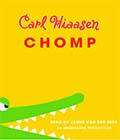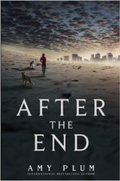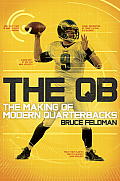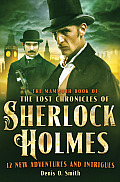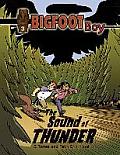Link to this review in the form of a comic strip by theo tagged coming of age
Link to this review by danritchie tagged coming of age
In the remote wilderness of Alaska there is a clan that has no contact with the outside world. It was founded in 1983 by a scientist who followed the teachings of Gaia. Every member has a gold starburst in one iris, and they never get sick or age after reaching adulthood. They are told that their village is a safe haven from the apocalyptic, post-World War III world.
Juneau is seventeen. One day she returns from a hunt to find her village completely empty. There is no sign of what happened. Juneau is determined to find her people. Setting out for the ocean, she comes upon Anchorage, a thriving modern city which was obviously not destroyed by a nuclear holocaust. While selling a gold nugget for cash, she is told that desperate men are trying to find her, and that she should fear for her safety.
Why I picked it up: One of my favorite YA titles is Plum’s Die for Me. Her great writing and quick pace made me want to try her newest title.
Why I finished it: This is not just Juneau’s struggle to avoid capture and find her parents, it is also very much about Miles, the son of a pharmaceutical kingpin who is after Juneau and the secret of her clan’s eternal youth. Miles sets out to impress his father by finding her. He goes to Seattle and, while wandering around the waterfront, notices a girl asking young people’s names. At first he thinks Juneau is crazy and mocks her survival skills and oneness with nature. But his attitude and demeanor changes when he sees Juneau use her wits and harmony with the natural world to avoid being caught. He begins to realize her honesty and conviction are real, and that she might mean more to him than a way to impress his dad.
It’s perfect for: Rich. He grew up privileged, and had a life changing experience when he nearly drowned while rafting. He will appreciate and relate to Miles’s metamorphosis from a smart-ass teen to to a thoughtful, caring, less egocentric young man and that throughout this growth, Miles comes to realize that he doesn’t care for his father or the unbridled corporate greed he represents.
Link to this review by flemtastic tagged nonfiction
The art and science of training quarterbacks is a multimillion dollar industry. Gurus have sprung up all over the United States and on the television airwaves. High school quarterbacks who wish to go after college scholarships have begun to train with specialized personal coaches. Feldman takes an in-depth look at several high profile trainers and their methods.
Why I picked it up: I watch ESPN every morning as I eat my breakfast, and I catch highlights and games at night. I have been hearing about quarterbacks and the new arms race to training to get college scholarships.
Why I finished it: Feldman takes quite a bit of time discussing elite quarterback competitions, including one run by Trent Dilfer on ESPN called Elite 11, a reality show competition to be named the best junior quarterback in the nation. A former student of mine, Max Browne (now backup QB at USC) appeared on that show, so I loved hearing about what happened behind the scenes.
Of the coaches discussed, George Whitman is my favorite. He’s known for his strange metaphors. He might tell a kid, “We don’t want you to go Michael Jackson here,” if the kid was up on his toes. Or he might prod a recruit on posture by saying he wants them to stay in the “keeping your suit and tie on” in formal posture. Whitman is best known for helping to train Johnny Manziel, a.k.a. ”Johnny Football.”
It’s perfect for: All three of my sons. They love football, and will eat up the practical bent of this book, like when the coaches tell a quarterback that he must plant his feet and drive off the inside arch of his foot for maximum performance. Before reading this I didn’t know that I had an inside or outside arch, much less that I needed to drive off it to throw a ball.
Link to this review by robert tagged mystery • historical fiction • anthology
Fans of Sherlock Holmes set many of our patterns for literary pop culture. The wild scramble and demand for the latest installment of a serialized story, the mock (and sometimes not so mock) learned societies that plumb the depths of continuity conflicts and short stretches of dialog, and the designation of the original material as “canon” (a word appropriated from theology). And then there’s the work of successors, ranging from somewhat deprecated fan fiction to solid professional work based on that canonical material. The Mammoth Book of the Lost Chronicles of Sherlock Holmes contains the latter.
Don’t let the gigantic title dissuade you: it’s the offspring of publisher Running Press’s tendency to slap “Mammoth Book” on their meatiest projects and Denis O. Smith’s name for his project, writing the Sherlock Holmes mysteries Sir Arthur Conan Doyle didn’t write.
Why I picked it up: I was checking my local library for new Sherlock Holmes criticism and this popped up. Since my interest in Holmes studies is a result of reading Doyle’s original stories, I decided to read these.
Why I finished it: Smith masterfully uses some of Doyle’s favorite starting plots: the theft of a famous jewel with a bloody history, a family inheritance fight, and the hunt for secret papers. He adds the atmosphere of London and environs just before the turn of the last century, and Doyle’s characters behave as expected. The ten short stories and two somewhat longer ones kept my interest, and for a while I could almost imagine I’d come across a new trove of genuine Doyle material.
Readalikes: Nancy Springer’s Enola Holmes series features the decidedly non-canon Enola Holmes, Sherlock’s adolescent sister, trying to make her own way in a very threatening Victorian London while staying out of the clutches of Sherlock and their smarter brother, Mycroft. The first book in the series is The Case of the Missing Marquess. Loren Estleman’s The Perils of Sherlock Holmes is a bit more traditional because Holmes and Watson are the protagonists, but Estleman is, in general, more playful with the characters than Smith — in one story he even partners Holmes with Wyatt Earp.
Link to this review by diane tagged coming of age • paranormal
Lizzie is on the way home from a few weeks at her dad’s house. She is caught in the middle of a terrorist attack at Dallas/Fort Worth airport. In the midst of dozens of casualties and a hail of bullets, Lizzie survives. In exchange, Lizzie finds herself in the company of a handsome young man who tells her that she has a new purpose — she is a guide who helps souls pass safely into the Afterworlds, and she can now pass from the world of the living to the one populated by spirits. Not all the spirits she encounters are friendly — some want to kill her and take control of the spirit world.
Darcy Patel is walking on clouds. The novel she wrote in one frenzied month has been sold to a publisher. She has a contract for a sequel and a big enough advance that she can move to New York City. She has a great apartment, hangs out with other YA authors, and is falling in love. Everything will be perfect if she can get through the edits to Afterworlds before her money runs out.
Why I picked it up: Apparently Westerfeld told his friends who are YA authors that they were all in the book. They responded with this “attack” video. I know it was a marketing ploy, but how could I resist the pleas of Holly Black and John Green? I ordered it immediately.
Why I finished it: Both Darcy’s story about trying to make it on her own in New York City and YA publishing and her protagonist Lizzie’s paranormal adventure/romance were compelling. The chapters alternate between Darcy and Lizzie, and were perfectly crafted to build the suspense and sympathy in both. As Darcy works through editing her novel, I couldn’t wait to see how Lizzie’s story turned out. Did Darcy just rewrite a fairy tale with a happy ending, or does Lizzie’s trek into the spirit world end in disaster?
It’s perfect for: The teens in my book club who love all things YA. The plot is captivating, the characters believable, and the dialogue smart, and they will love trying to match Westerfeld’s fictional authors with their real-life favorites.
Link to this review by craigseasholes tagged picture book • biography
Malala Yousafzai’s family runs a series of schools in the Swat Valley where she was enrolled from an early age. By age eleven she was blogging for the BBC about the plight of girls and education under the Pakistani Taliban, which often attempted to shut down girls’ schools in the regions they controlled. In October 2012 her school bus was stopped by Taliban gunmen and Malala was shot through the face and shoulder. She miraculously survived and has continued to speak out for girls education.
When he was four, Iqbal Masih’s parents were given a twelve dollar loan, and he was forced to work fourteen hours a day, seven days a week weaving carpets while earning only twenty cents a day towards repayment of the loan. At age ten he learned that anti-slavery laws had been passed by the Pakistani Supreme Court and eventually escaped to join activists of the Bonded Labor Liberation Front. Iqbal continued speaking out against the carpet bosses and is credited with helping over 3000 bonded children gain freedom. At age twelve, shortly after returning home from traveling to the U.S. to speak against child slavery, Iqbal was shot and killed.
Why I picked it up: Malala’s pink headscarf frames her dark eyes, which stared straight into mine.
Why I finished it: Malala was co-recipient of the Nobel Peace Prize in October 2014, and her courageous advocacy for girls education is an inspiration to all. These two simple stories evoke concern for the plight of others while presenting hopeful examples of children taking a stand against injustice.
The book is not only informative, it’s beautiful. Each story is presented in thirteen gorgeous paintings; Iqbal’s feature geometric borders from Islamic carpet designs while Malala’s have patterns from traditional women’s clothing. A wordless, two-page center spread, where their stories meet, shows both children flying kites from the mountaintops.
It’s perfect for: My daughter, who was born to the same sort of grinding rural poverty and limited opportunities presented in these two stories. Though she’s been adopted and educated in the U.S., stories of courageous children like Iqbal and Malala open her eyes and heart. We all need such inspiration.
Link to this review by geneambaum tagged graphic novel
In the previous book, in the woods near his grandmother’s house, Rufus found a carved wooden totem that turns him into a huge, red-headed sasquatch with super strength, big feet, and the ability to talk to animals, including Sidney, a flying squirrel.
On a return trip to his grandmother’s, some ravens see Rufus transform. They dream of what they could do with his totem, and they steal it.
Rufus needs to get it back so that he can talk to Sidney again and stop the destruction of the forest by developers.
Why I picked it up: I enjoyed Book 1, and I’m a fan of both Torres and Hicks.
Why I finished it: The ravens. Most of them are sinister and scheming — they even kidnap Sidney at one point. But that’s all offset by the comic relief of Beak, who can never think of anything except his next meal. And it’s also funny when the crows try (and fail) to pronounce “sasquatch.”
Readalikes: Peanut Butter and Jeremy’s Best Book Ever!, the story of a kind cat and a tricky crow who’s after the cat’s hat, who gradually become friends. It’s one of my daughter’s and my favorite read-alouds.
Link to this review by geneambaum tagged fantasy • western • graphic novel • paranormal
Reviewer’s note: This is a mythical story told very indirectly and with great skill. I recommend you don’t read this section of the review. Skip down to Why I Picked It Up:. Figuring out what’s going on in the book is the best kind of puzzle, and it’s one set in a brutal world filled with beautifully rendered violence.
Sissy and her blind guardian Fox travel the wild west, telling stories to pay their way. One of them is more real than it sounds. It’s about a man who imprisoned a woman in a tower. When the woman begged Death to take her, Death decided to attend to the matter personally. But instead of ending her life, they had a child together. Her name was Ginny. She was raised as a Reaper, to exact vengeance on men who sinned.
Ginny is after Fox. But she’s also on the run from her father, who has sent agents to bring her home. In the middle of all of this is Sissy, who seems like a normal young girl even though her eyes are different colors. But her origins are bloody, and her destiny may be even more violent.
Publisher’s Rating: Rated M / Mature.
Contains material published in Pretty Deadly #1 - #5.
Why I picked it up: There aren’t many graphic novel westerns out there, and I tend to read them all. Plus there’s a cover blurb from Warren Ellis: “Grand and majestic storytelling.”
Why I finished it: The girls introduced in the first few pages are freaky and compelling, and hooked me just as they were intended to. One shoots away half a cute bunny’s head with a revolver. Cut to the other, who runs through a small town wearing a cloak made of dead vulture parts, leaping around and cawing like a crow. (It’s Sissy, who is attracting an audience for a storytelling performance. If I saw her running through my town, I’d stop and watch for sure.)
Readalikes: Jonathan Hickman and Nick Dragotta’s East of West, a science fiction western in which Death rides a pale mechanical horse as he seeks revenge and opposes the other three of the four horsemen of the apocalypse. And any book with Death as a character always reminds me of Piers Anthony’s On a Pale Horse (I read it in middle school) in which a young man about to commit suicide shoots Death instead, then has to take over his job.
Link to this review by robert tagged history
One way to create a non-fiction book about a complex topic for a young audience is to contract with a specialist writer to create the work. Another is to contract with a celebrated author of a noted adult book on the same topic and adapt that book for the youth market. D-Day: The Invasion of Normandy, 1944 is an example of the second approach. (The original book it’s based on is Atkinson’s The Guns at Last Light.)
Why I picked it up: It’s got a great red, “white,” and blue cover with dog tag-shaped cartouches and an oft-reproduced black and white photograph of heavily-laden soldiers wading into surf from a landing craft. I like to read books about World War II to see if the photos are ones I’ve seen before, and if they make sense in context with the text.
Why I finished it: The pictures complemented the text very well, and their captions explained the pictures effectively. And then there was the text. In similar books, I often find sidebars off to the side of the main text to tell about a small event that was part of a greater endeavor don’t give a context. That didn’t happen here. Thirty-three pages of timelines, glossaries, salary tables, and packing lists (for example, what U.S. Army paratroopers carried and how) really help readers understand D-Day’s place in World War II. They show how it was planned, and explain why Normandy was picked as an invasion site, how the battle was fought, and who did that fighting. The history and anecdotes are abridged and edited for concision, but the violence isn’t depicted in a softer, more palatable way.
Designating this a book for juvenile and young adult history fans is a disservice. I’m an adult with a more-than-casual background in the history and personalities of World War II, and I found plenty of new information which was presented much better than I’d seen it done in the past. (There are two incorrect photo captions, one that identifies a German surface torpedo “E-boat” as a “U-boat” and another that mistakes General Theodore Roosevelt Jr. for his famous father, former President Theodore Roosevelt, but overall it was excellent.)
Readalikes: The Longest Day, a history of D-Day which was first published in 1959 and is perhaps outdated, but Ryan interviewed many D-Day participants for his book, which provided the basis for many of the anecdotes and incidents in this one. And Double Cross: The True Story of the D-Day Spies, which is a highly regarded, more recent look at Allied efforts to deceive Germany’s leadership about the location of the D-Day invasion.
